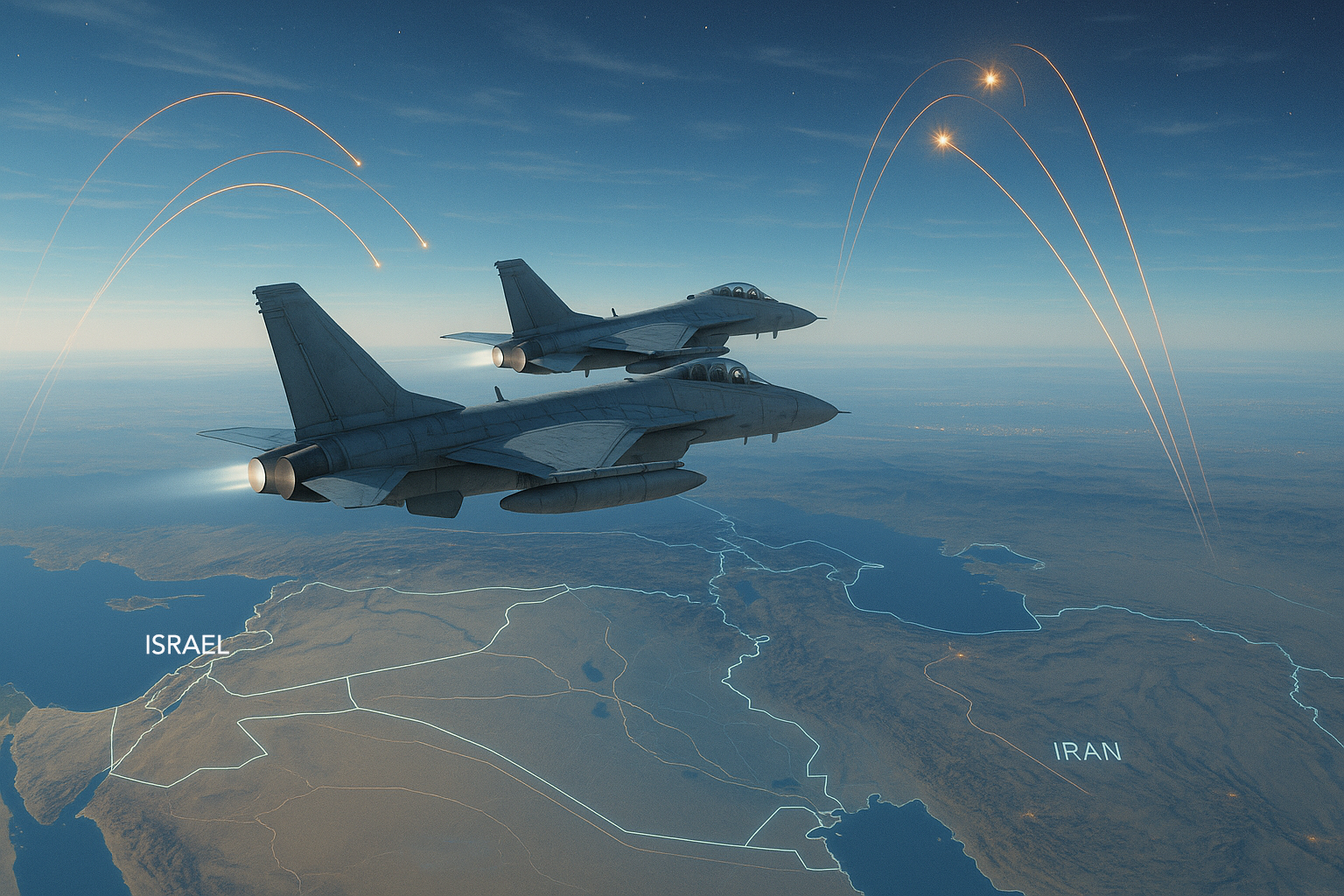
Israel’s recent air war with Iran ended over six weeks ago and military analysts are still dissecting its successes, failures, and tactical innovations.
The Wall Street Journal featured a deep dive article in their July 15 edition that examined the systems used by Israel to defend its airspace and the shifting tactics utilized by the Iranians to try and score more hits. Notably, although Iran fired fewer missiles toward the end of the conflict, its strike success rate increased.
Though the brief aerial conflict received far greater attention after U.S. President Donald Trump ordered airstrikes on key infrastructure tied to Iran’s nuclear program – see here and here – thereby threatening to draw America into yet another conflict in the region, such an outcome never arose.
Instead, the regime in Tehran – concerned first and foremost with its own survival and continued control over the Islamic Republic – has been left seeking to reconstitute its degraded military assets and trying to tap into rekindled patriotic impulses to distract from its own shortcomings.
With the salvoes between the two sides ending, reviews of military operations have revealed two points that were predictable even before Iran launched its first missile.
Two Predictable Lessons

Post-conflict reviews have underscored two predictable truths:
- No air-defense network is impenetrable. Even Israel’s layered, technologically advanced system—remarkably effective overall—still suffered a roughly 14% hit rate.
- Industrial resilience matters. High-intensity operations demand secure supply chains, robust munitions stockpiles, and sustained production capacity. As the conflict dragged on, Israel faced dwindling interceptor inventories, forcing a compressed operational timeline and limiting strategic options.
The war’s lessons echo those of the ongoing Russia-Ukraine conflict: stockpiles, supply chains, and industrial capacity are no longer secondary considerations. Countries from Australia to Japan have begun to adapt their defense strategies accordingly.
For the U.S., this remains a pressing challenge. Reports indicate that defending against an Iranian salvo targeting the al Udeid air base in Qatar required 30 Patriot interceptors to stop 13 of 14 incoming missiles—a troubling ratio for any future large-scale conflict.
A Warning for the West
If another confrontation erupts, NATO and its partners can no longer treat industrial-scale warfare as a relic of the past. The Israel-Iran conflict has provided another stark reminder: preparedness in the 21st century isn’t only about advanced systems—it’s about having the scale and resilience to sustain them.
***********************************************************************
Thank you for reading, and while you are here, please take note of this post by FI Military Aerospace Lead Analyst Jon Hemler, which examines U.S. fighter deliveries at mid-year.
Dan Darling is Forecast International’s director of military and defense markets. In this role, Dan oversees a team of analysts tasked with covering everything from budgeting to weapons systems to defense electronics and military aerospace. Additionally, for over 17 years Dan has, at various times, authored the International Military Markets reports for Europe, Eurasia, the Middle East and the Asia-Pacific region.
Dan's work has been cited in Defense News, Real Clear Defense, Asian Military Review, Al Jazeera, and Financial Express, among others, and he has also contributed commentary to The Diplomat, The National Interest and World Politics Review. He has been quoted in Arabian Business, the Financial Times, Flight International, The New York Times, Bloomberg and National Defense Magazine.
In addition, Dan has made guest appearances on the online radio show Midrats and on The Media Line, as well as The Red Line Podcast, plus media appearances on France 24 and World Is One News (WION).




